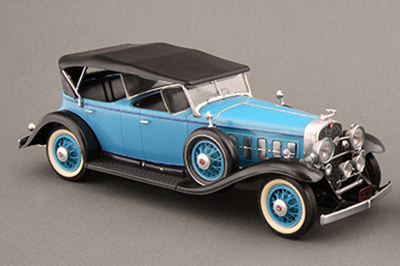 The exhibition History of Motorisation in Miniature presents the most valuable objects from the collection gifted to the National Museum in Kielce by Sławoj Franciszek Gwiazdowski (1927–2009), a pioneer in collecting model vehicles in Poland.
The exhibition History of Motorisation in Miniature presents the most valuable objects from the collection gifted to the National Museum in Kielce by Sławoj Franciszek Gwiazdowski (1927–2009), a pioneer in collecting model vehicles in Poland.
Among the numerous (over 200) exhibited miniatures, one can find objects representing all the most important car construction centres, that is originating from factories in America, Europe and the former Eastern Bloc. Most of the models are of both regular cars and sports cars, but military and police cars can also be found.
An important notion of the exhibition is to stay true to the original concept of the donor, that is the depiction of the history of motorisation from the first automobiles of the late 19th century to contemporary cars. The most representative part of the collection are models of cars manufactured until the 1940s which, according to Gwiazdowski himself, were the most important part of his collection. A notable place among the miniature cars from this period is taken by the CWS T-1, the first wholly Polish-made car, mass produced from 1927 to 1931 in the Central Car Works in Warsaw. It took Gwiazdowski 300 hours to build the model from scratch, and the result was very well received by the scale model press due to a meticulous attention to detail.
A separate group are large size models. One remarkable example is the 1:8 scale Rolls-Royce Phantom II 40/50 HP Continental “Star of India” from 1934. The model depicts a custom car built for the maharaja of Rajkot. The saffron-coloured passenger compartment provides a contrast to the other parts of the car body, which are made of polished aluminium. The model includes a retractable roof which is made from canvas, just like in the original.
Curator: Michał Biłejszys
Coordinator: Anna Sychowska
Pictured:
Cadillac V16 Sport Phaeton
Jo-Han, USA
MNKi/Mat/G/254








